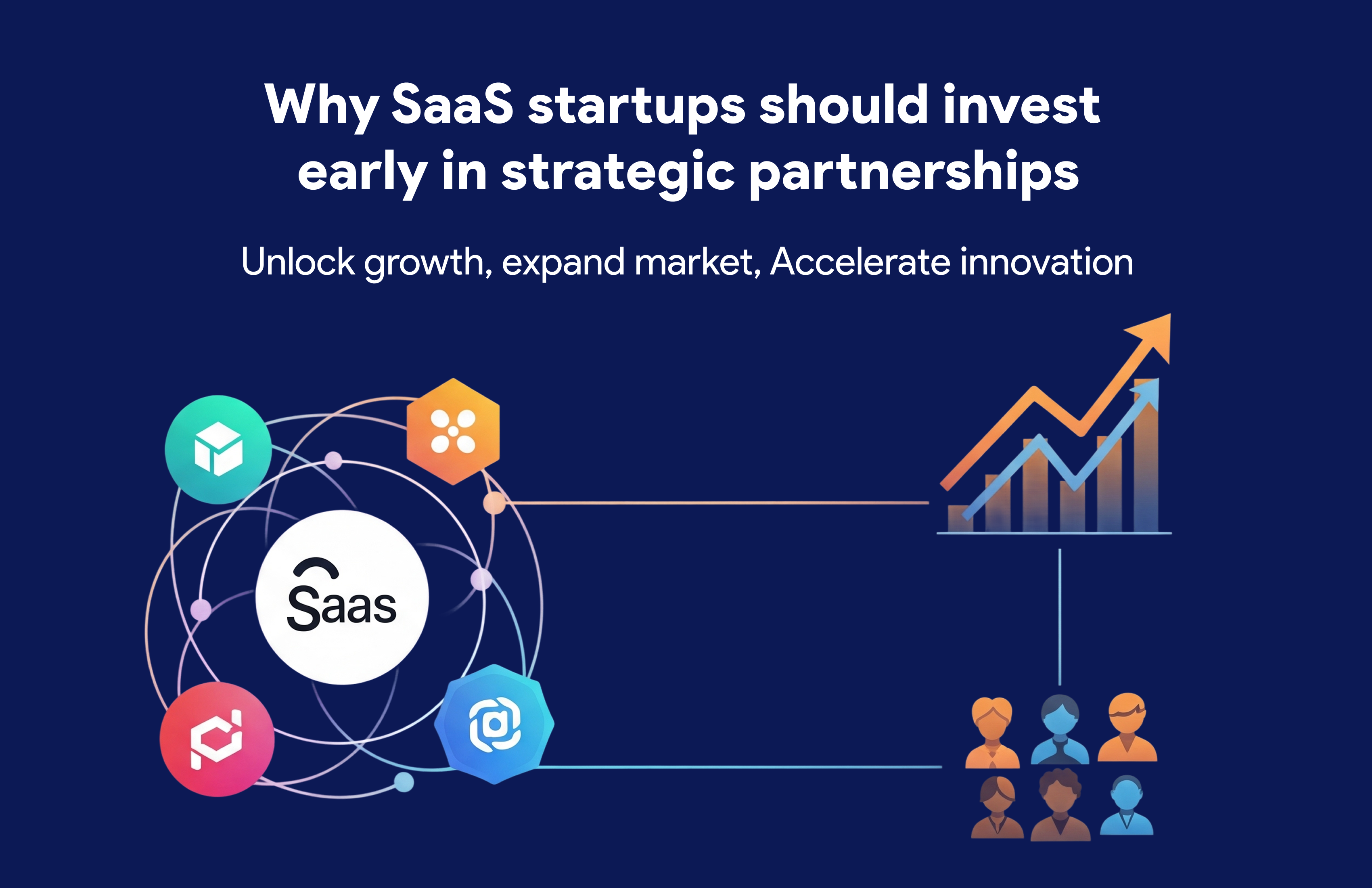
| “Collaboration allows us to know more than we are capable of knowing”. – Paul Solarz. |
This is true. The most impactful and unique ideas or innovation barely come from a single perspective.
It comes from listening, sharing, accepting, and valuing the differences each person brings to the table.
Perhaps this is the most obvious reason behind why businesses are potentially increasing revenue not just by building products alone but partnership investment.
And, there’s plenty of evidence why it future proof ecosystem, let’s have a look at them:
Partnership Ecosystem vs Product Only Focused Business: Where Does It Differentiate?
Table of Contents
| Strategic partnership programs | Product only innovations |
| It enables market entry, network expansion | It requires building trust in a new market from scratch |
| It shares risk and cost of new initiatives | Here all risk and costs remain internal, not shared |
| It boosts collective expertise of both partners’ resources and speed of innovation | It’s limited to the capabilities of in-house experts’ knowledge and skill |
| It enhances both brands’ reputation through trusted association | Both brands’ reputation relies solely on individual product success |
| It provides adaptability and resilience in fast-moving or disrupted markets | It’s more vulnerable to shifting customer expectations and market volatility |
Here the takeaway is clear: strategic partnerships strengthen resilience.
Now, flip the situation. Think of a country where product consumption is rising rapidly. And with that growth comes the pressure of reducing your environmental footprint from production to packaging.
Eventually, you hit the higher costs by investing in sustainable materials, eco-friendly packaging, and customer demand centric innovation – you make the product pricey. And, your targeted customers choose the cheaper alternative.
Then the real challenge surfaces: It’s not about an innovative product; it’s survival.
Your question: How to build adaptability in a price-sensitive market?
How to balance affordability responsibly to broaden the customer base?
Exactly, this is where investment in strategic partnerships can truly change your game.
By collaborating with the right co-partner, you can share R&D, branding, and marketing costs, access eco-friendly supply chains, educate consumers, and sell faster together for long term transformation.
Brands that Prove Not Just Products But Partnership Investment is A Great Idea in Itself
Making the right business partnerships claim authenticity, value, stability, and profitability demonstration. And, many well known brands have evidence of its healthy success differently. Let’s have a quick shot:
Strategic business partnerships create opportunities down the lane
Partnership offers access to resources and guidance that make launching and running a business easier. And, a common example we find here is franchising.
The U.S. franchise industry generates around $827 billion annually across 792,000 establishments. While fast food, business services, full-service restaurants, and real estate dominate, franchises come in many forms like Liquivida, which uses franchises to deliver IV vitamin therapy.
Samael Tejada, founder of Liquivida, explains:
“Franchising lets entrepreneurs operate a recognized brand while receiving support from the franchisor – training, marketing, business strategy, and even site selection – all designed to boost their chances of success.”
Though Samael’s words are true, you make it clear that franchising is just an option to evaluate. You can outsource or automate tasks to trusted partners at a low cost, high end value.
For instance, you look for a fit-for-purpose partner and get an AI powered CRM and location tracking application at just Rs.699 to establish success. Needless to say, you reach capabilities in places such as people, budget, tech, and expertise. Just think about it!
Investment in partnerships fuels innovation in new directions
One more insight for you from the tech-enabled fitness partners ecosystem. Nike and Apple transformed the fitness-tech space with their Nike+ and Apple Watch integration.
Their consumers embraced tech that give them quick access to fitness plans and track fitness progress in a single tap. This watch just blends analog and digital elements for easy adaptability but comes with an app to support every step taken.
All-in-all, the lightweight, comfortable, easy to use product transforms the real lifestyle in engaging ways. And, these duo brands show how to keep pace in the market to match how people move without innovating anything from scratch.
Value-added partnerships boost revenue with a higher close rate
Take Microsoft and Azure, for example. They don’t just sell products – they enable partners to offer value-added services like implementation, support, and adoption. Why? Because their customers want bundled, high-value solutions, not standalone tools.
Meanwhile, AWS makes it simple for partners to collaborate and co-sell, and Microsoft’s Multiparty Private Offers (MMPO) allow multiple vendors to package solutions into a single seamless deal.
The impact is clear: when their 4+ partners join a single transaction, this marketplace drives both – visibility and revenue. In fact, it is projected to surpass $40 billion by 2025, all by prioritizing collaboration.
A strategic co-branding partnership can create massive buzz
Last but not least, a value added co-branding partnership deal shows how you can avoid investing your big pockets but still can create a separate fan base.
For instance, take Uber and Spotify’s partnerships. On one hand, Uber riders connect their Spotify account and control the car’s music, turning every trip into a personalized experience. On the other hand, its riders get the comfort of their favorite playlists. Uber gains customer advocacy by improving their satisfaction, and Spotify gains new users from Uber’s massive audience.
This integration quickly boosted both brand engagement and loyalty – showing how a simple, shared touchpoint can make the ride memorable and drive real results for both companies.
What Does It Mean for C-Suite Leaders like You?
- You can formalize engagement models to exceed revenue targets faster with co-partners compared to those who solely rely on product innovation.
- Smart C-suite teams are now integrating partnership strategy into three-to-five-year business planning, rather than chasing short-term spikes. And, so do you.
- Instead of being opportunistic, you can cultivate business partnerships as a core competency. If you follow a structured approach, you can achieve more than an 80% success rate with strategic alliances. Just do the compatibility assessment to prepare for that 20% hurdle if things fall apart.
Grow with Future Ready Business Partnerships Today and Tomorrow
The changing world of businesses need strategic alliances to think out of the box when it comes to progression.
Individuals may no longer be able to survive alone with their product only in this fast moving digital age. So, instead of adopting a wait-and-see approach, why not give logical partnership a shot?
If you don’t know with whom you should take the first step for collaboration, let us simplify it for you. Lystloc has got your back; let’s be partners. We’re open with flexible deals that suit your growth requirements, just reach us via email partners@lystloc.com.
Let’s be ahead of the game tomorrow!

